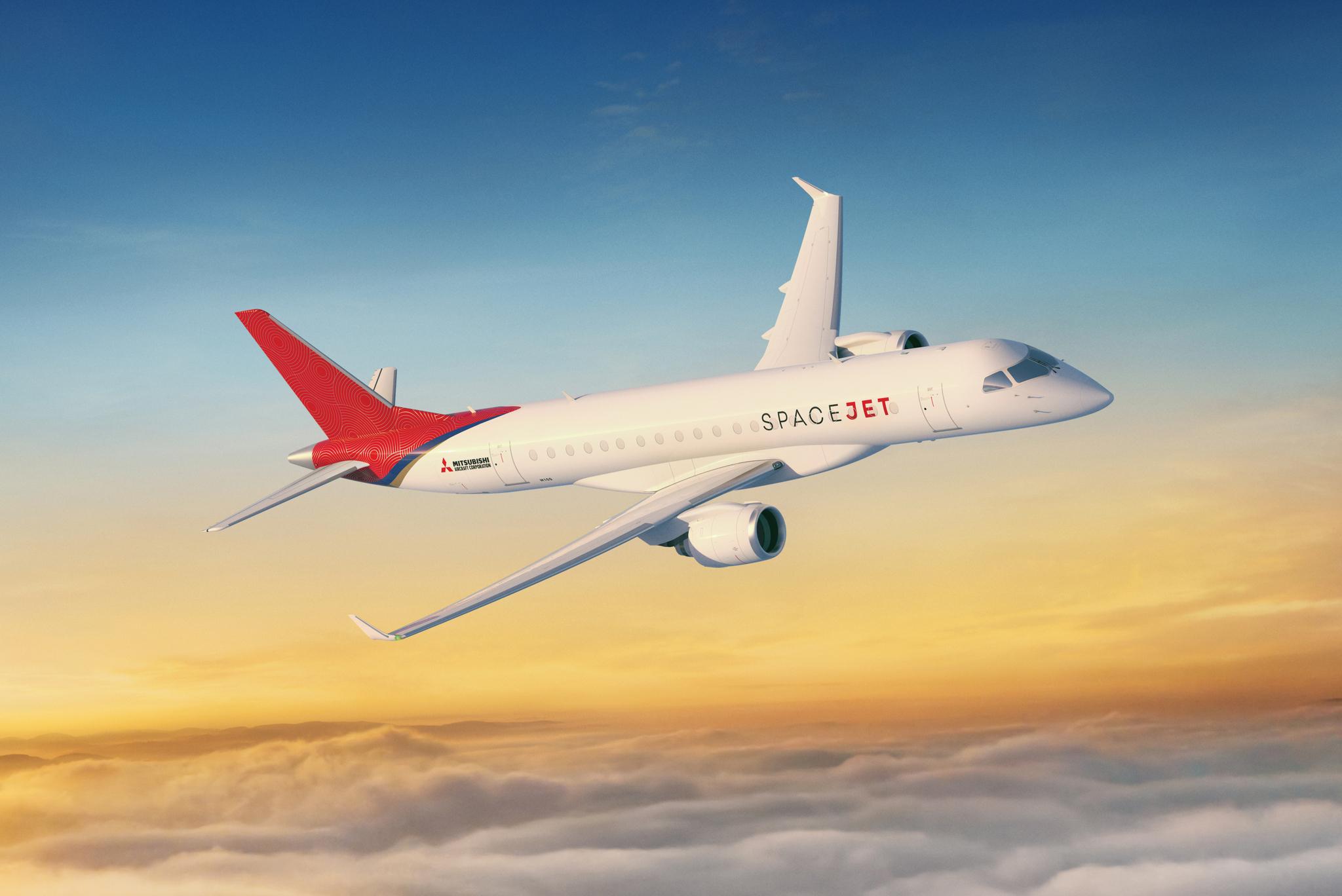
BEIJING—Mitsubishi Heavy Industries (MHI) has suspended development of the M100 version of the SpaceJet regional jet as one measure in stanching the cash bleed from the program.
SpaceJet losses drove the whole MHI industrial group into loss for the fiscal year beginning April 2019, according to its annual report. MHI expects in fiscal 2020, further SpaceJet losses will offset profits from all its other operations, which range from space launch to nuclear power to rail systems.
Deliveries of the first SpaceJet version—the M90—will begin in fiscal 2021 or later, the company said, repeating the wording it used three months ago when announcing the latest delay to the protracted program.
MHI chief executive Seiji Izumisawa announced suspension of work on the M100 during a briefing on the results on May 11. Plans for the version will be reconsidered during the suspension, he said.
Intended for the North American market, the M100 was designed to offer an optimal combination of range and seating within the weight limits that big U.S. airlines’ pilot contracts impose on aircraft operated by outsource carriers.
The SpaceJet has been under development since 2008 by Mitsubishi Aircraft, which is majority-owned by MHI. The type was at first called the MRJ. The MRJ90—seating 88 in an all-economy arrangement—became the M90 in June 2019, when the former 76-seat MRJ70 was dropped and replaced by the 84-seat M100.
In its results announcement, MHI seemed to hint at the possibility of deliberately stretching out the program. As one of its responses to the COVID-19, it listed “continuing detailed review of the SpaceJet schedule in view of the severe market conditions facing commercial aviation and test flight-related setbacks.”
It did not detail those setbacks, but the pandemic has interrupted work at the program’s flight-testing base at Moses Lake, Washington.
Another response to the pandemic will be “setting an appropriate budget considering challenging financial headwinds for MHI Group.”
The company expects to lose ¥110-130 billion ($1-1.2 billion) on the SpaceJet in fiscal 2020. Since the program will be earning little or no revenue, that figure should be close to the cost of development for the year. In fiscal 2019, the loss was ¥263.3 billion, but that included impairment losses of about ¥130 billion. In the year before that, the loss was ¥85.2 billion.
The company has been spending on building additional prototypes and flight testing.
MHI will close the purchase of Bombardier’s CRJ program, not including its production facilities, on June 1. MHI said on May 7 it would in fiscal 2020 write down ¥50-70 billion of goodwill, assets and liabilities acquired in the transaction. The CRJ program will become part of a SpaceJet marketing and support unit.
The interruption of flight testing at Moses Lake came just as the program’s crucial sixth prototype became available. This aircraft conforms to the new, certifiable design—the result of changes that Mitsubishi Aircraft realized in 2016 were necessary. Mitsubishi Aircraft has expected this aircraft to carry most of the burden of remaining flight testing, with two more aircraft of the same design to be used mainly for ground testing.
These and the first five prototypes are all built to the M90 standard. The type is powered by the Pratt & Whitney PW1200G engine.

